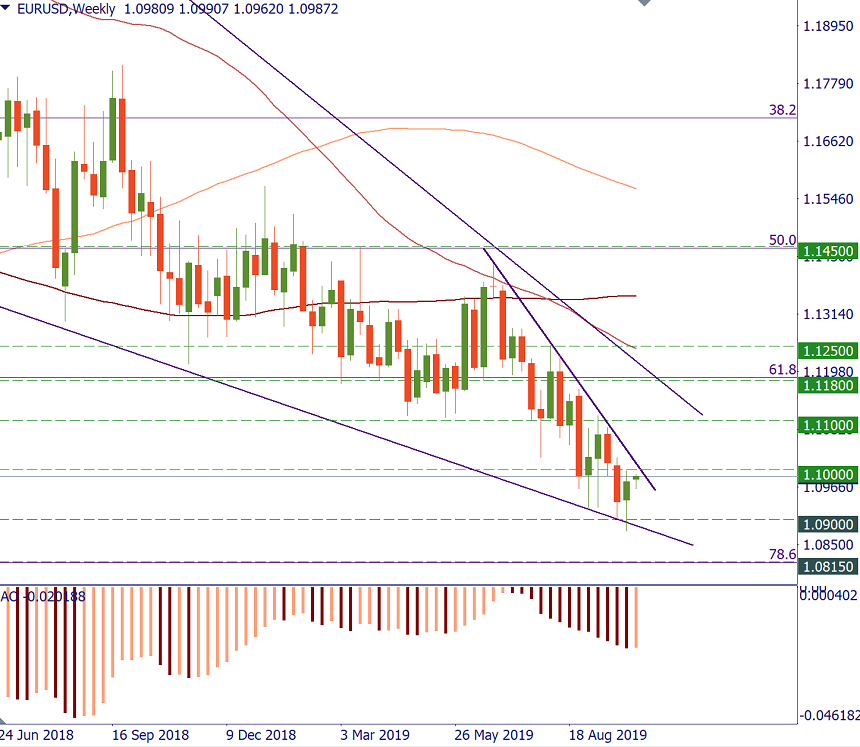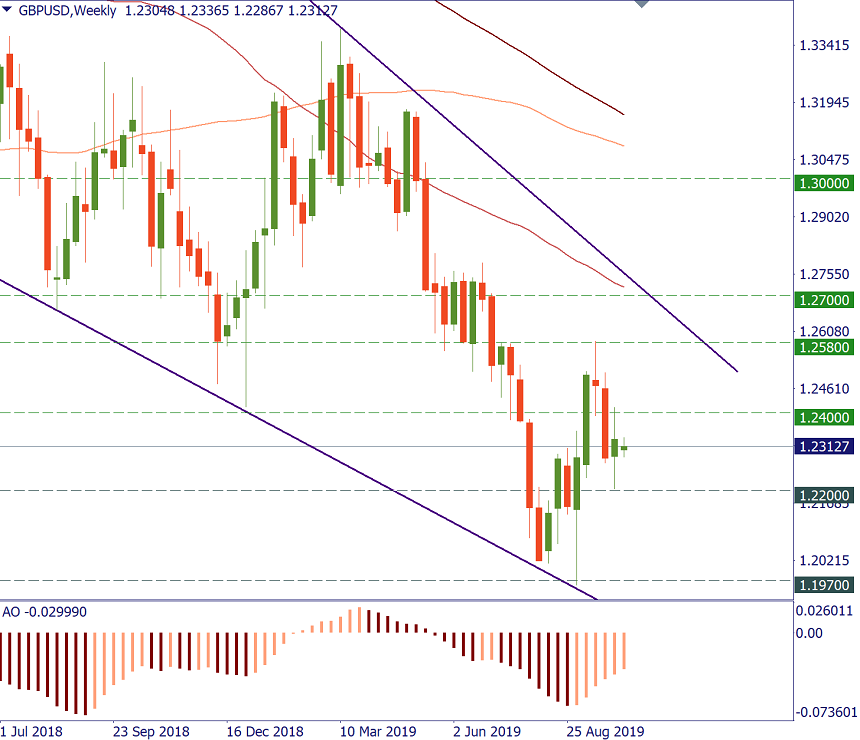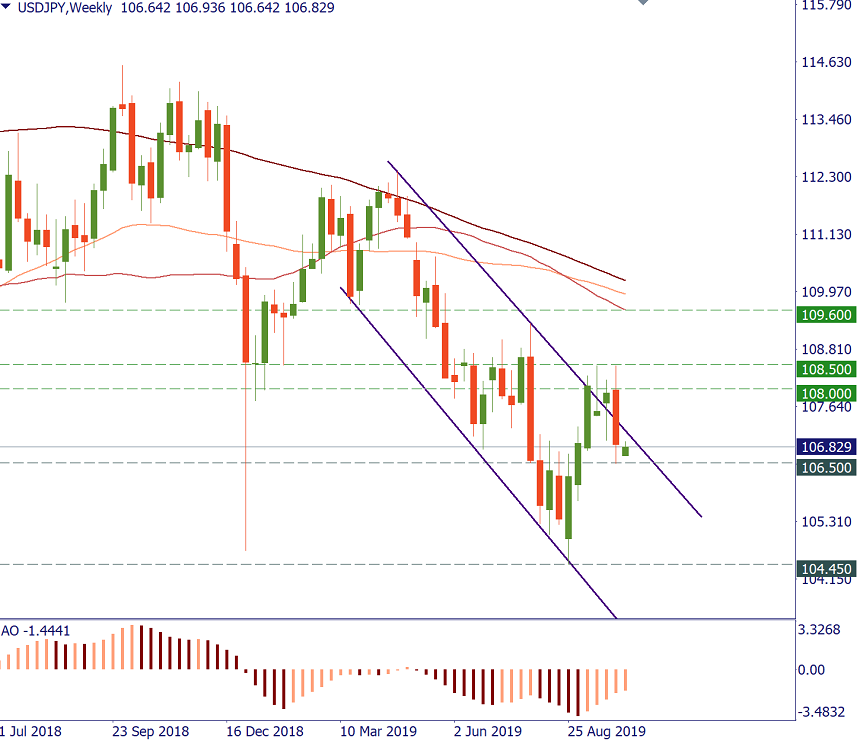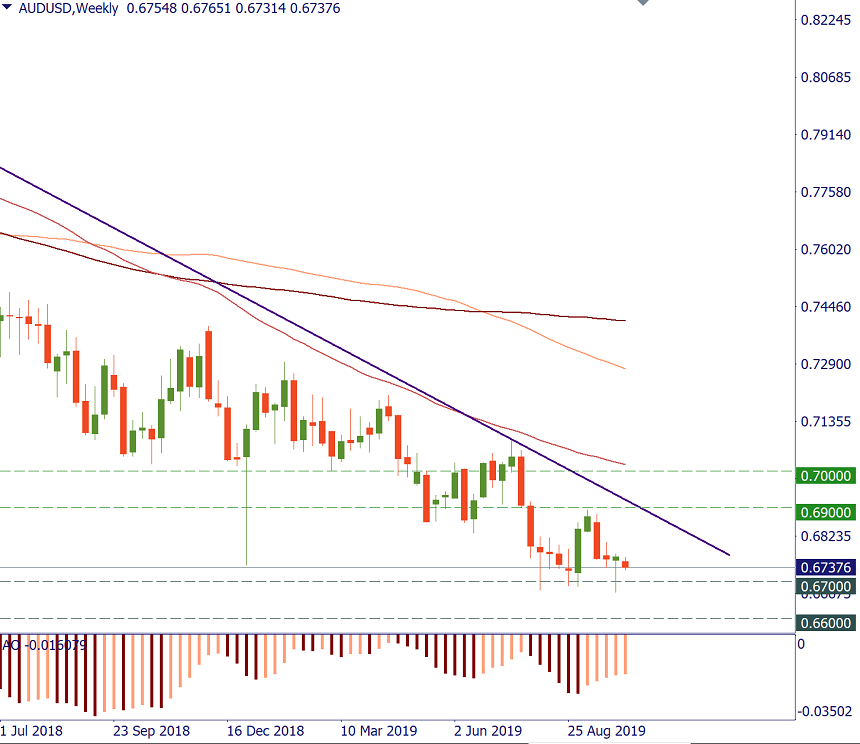October for currencies: the moment of truth
The market always lives by expectations. Yet, from time to time we approach important deadlines after which things change, currencies move, markets adjust and new expectations are formed. This month is rich with such deadlines. In this article, we have gathered important information and tips that will ease your navigation through the upcoming events.
News bulletin: key topics
- Brexit
No-deal Brexit seems like a fun idea for a Halloween costume, except that this outcome is still on the table, the deadline being set on Oct. 31, and it won’t be good or fun for anyone if Britain and the European Union divorce the hard way. Before that, there’s another deadline - Oct. 11 - for the UK to deliver its Brexit proposal. If Prime Minister Boris Johnson doesn’t give in and make significant concessions and the EU rejects his plan, the situation will look bad. The GBP isn’t plunging for now as there are strong hopes that either the British Parliament or the courts will step in to block or delay the hard Brexit. Still, no one knows for sure what will actually happen this month, so the risks are obviously elevated - something you have to remember if you plan to trade the GBP.
- Trade problem
Just like with the previous weeks, investors are swinging from trade pessimism to optimism and back on a daily basis. American and Chinese officials will meet on October 10 and 11. A face-to-face meeting is surely good. However, Bloomberg has recently reported that Beijing is willing to discuss only a narrow list of topics. This significantly diminishes the possibility of a broad agreement. Donald Trump, in turn, doesn’t show any willingness to compromise with China. The absence of progress in the talks will make the uncertainty drag on. There’s, of course, nothing new for the markets in that. Yet, every time the US economic figures come out weaker-than-expected because of the negative impact of the trade war, the USD will feel heavy pressure.
Weeks ahead: more from central banks
Central banks always act as beacons for traders. The upcoming weeks offer no exceptions and should provide us with more guidance. Here's what we should look forward to:
Oct. 9 - FOMC Meeting minutes; Fed Chair Powell Speaks
The Fed’s minutes will provide more information about the September rate cut, while Powell’s comments might give some idea about the central bank’s inventions for October.
Oct. 10 - BOE Gov Carney Speaks
With Brexit all over the place, the Bank of England’s Governor may try to deliver a final warning about the risks that lie ahead of the British economy and explain what the regulator might do if the no-deal scenario becomes reality. Obviously, the weight of saving the UK economy will fall largely on the BOE shoulders. While the regulator stresses that the financial system is prepared for the hard option, the central bank would probably have to do more, so those who trade GBP should be on the lookout for hints about the bank’s November meeting. The Bank of England might put a rate cut and injection of liquidity on the table.
Oct. 24 - European Central Bank’s Meeting
Last month the ECB eased policy. The central bank’s stimulus package included the reduction of the deposit rate by 10 basis points to -0.50% and the restart of the asset purchase program (APP) at a monthly pace of €20 billion from 1 November. The odds are that, after such a move, the ECB will stay pat, taking time to evaluate the impact of its actions. Still, the bank’s President can make important comments during the press conference, so the EUR will still be volatile.
Oct. 30 - Bank of Canada’s Meeting
Canadian economic data have recently faltered: the pace of economic activity slowed sharply in September (Ivey PMI dropped from 60.6 to 48.7) and real GDP showed no growth in July. The BOC will have to address these bleak changes. The weak figures make investors talk about the potential rate cut, so the central bank’s meeting will draw much attention and determine the future dynamics of the CAD.
Oct. 30 - Federal Reserve’s Meeting
After the really disappointing ISM manufacturing PMI and discouraging September labor figures, traders dramatically increased their bets on an October rate cut. Although the Fed’s Chair Jerome Powell may prepare the markets for the meeting in his speeches ahead of it, the actual event will still be important and path-defining for the USD and, hence, all major pairs.
Oct. 31 - Bank of Japan’s Meeting
The BOJ doesn’t appreciate the stronger JPY. Last month the Bank of Japan hinted it may ease monetary policy in October as the economy’s movement towards the inflation target is not going as planned due to the external reasons. Such a statement makes the meeting important. If the Fed lowers its rate, however, the BOJ will have a hard time fighting the uptrend in the JPY.
Time of the charts
EUR/USD. The oversold EUR has managed to use the weakness of the USD to its advantage and hold above 1.09. The currency pair’s maneuvers take place in a narrowing range. On the one hand, this increases the odds of a breakout. On the other hand, if both the ECB and the Fed act dovish, it may lead to a kind of balance and keep EUR/USD around the current levels. Still, as the ECB has done its part the previous month, all eyes will be on the Fed. The strong support can make the pair regain 1.12. If, however, the Fed refrains from easing, the plunge below 1.09 will lead the pair down to 1.08.

GBP/USD. The GBP has relatively stabilized in September, but the consolidation attempt looks like the calm before the storm. There are all reasons to believe that the currency pair is doomed for much bigger moves in October. Whether it will be up for a relief rally above 1.27 and towards 1.30 or a selloff to 1.19 and possibly even to 1.10 will depend on the nature of Brexit.

USD/JPY. The currency pair has failed to overcome resistance of 108.00/50 in September. The return below 106.50 will open the way down to August low in the 104.50 area. Above the mentioned resistance, the 109.60/110.20 zone looks like another enormous obstacle for buyers.

AUD/USD. The Reserve Bank of Australia cut its rate to the record low of 0.75% in October. Still, so far AUD/USD has managed to keep closing above 0.6700 on a weekly basis. At the same time, global uncertainty is hurting the Aussie, the pair’s in the overall downtrend, so upside should be very limited. The key resistance lies at 0.6900.

Good luck with your trading! Follow us on Facebook and Telegram for more updates!